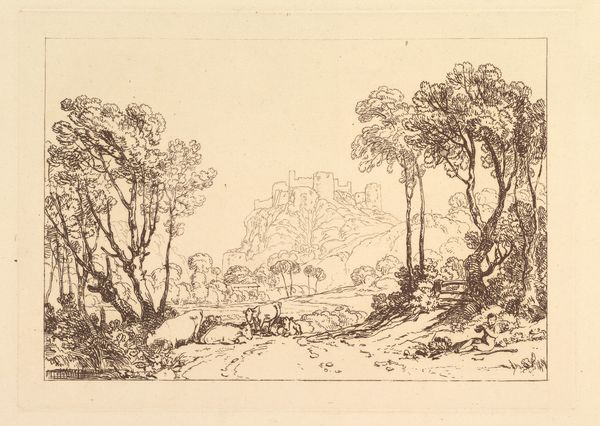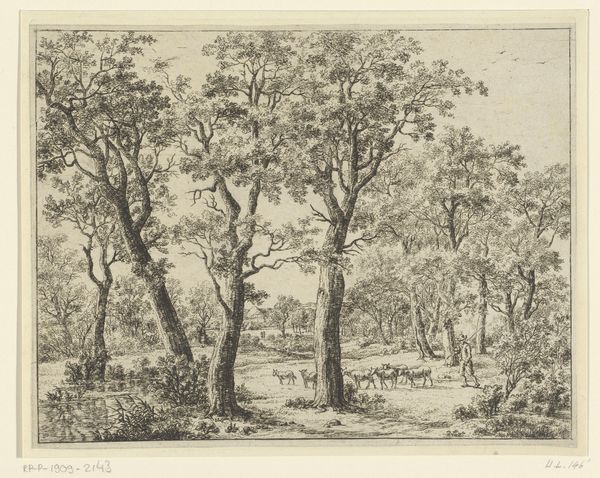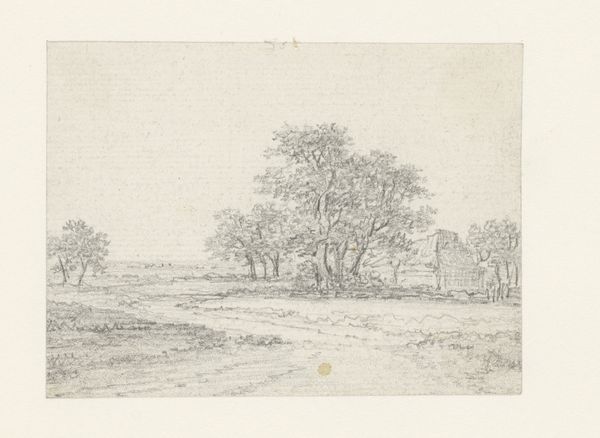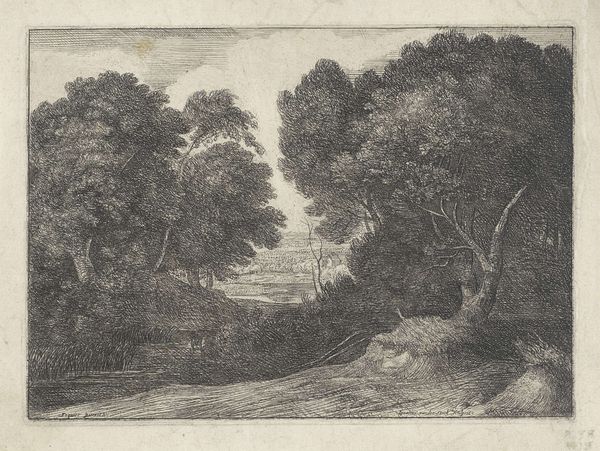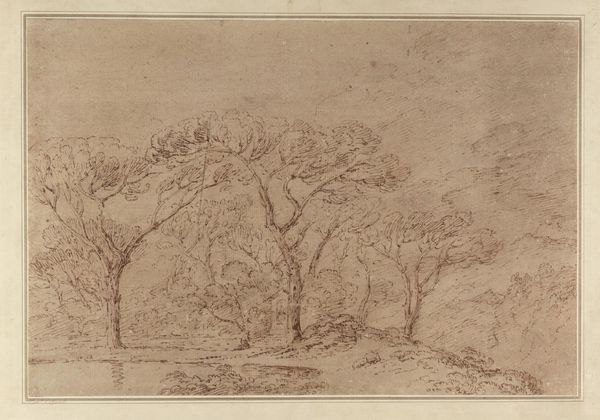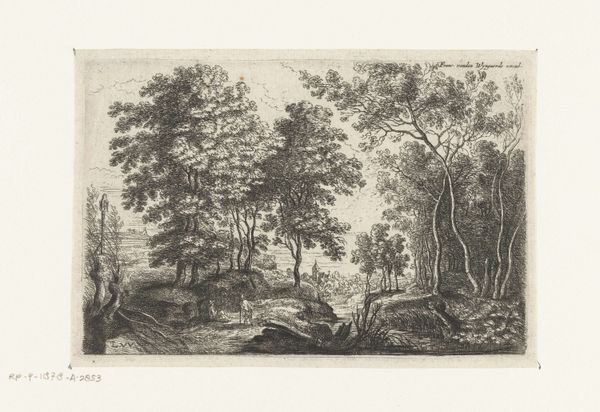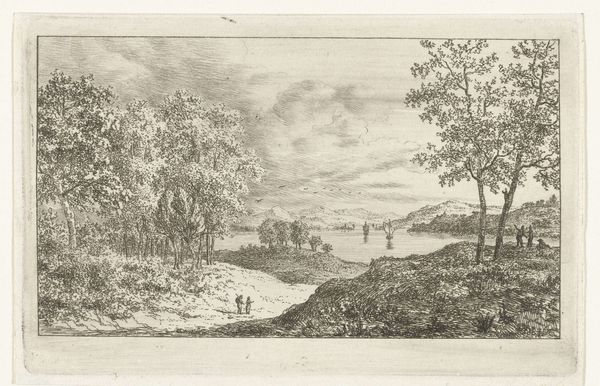
drawing, print, etching, paper
#
drawing
# print
#
impressionism
#
etching
#
landscape
#
paper
Copyright: Public Domain: Artvee
Editor: Here we have James Ensor’s "The Pool with Poplars," an etching from 1889. The density of marks creating the foliage and reflecting in the water feels almost feverish to me. How do you approach a work like this? Curator: As a materialist, I'm immediately drawn to the process. Etching, a printmaking technique, involves a high degree of labor. Think about the artist's hand, meticulously layering marks to create the image. What does that labor signify here? Is it simply representational, or does it reflect a deeper engagement with the subject? Editor: I guess I hadn't considered the amount of physical work involved in creating this image. Do you think the choice of etching itself influences how we perceive the landscape? Curator: Absolutely. Etching, unlike painting, necessitates a reproductive element. Multiple prints can be made from a single plate, disseminating the image and, therefore, the artist’s view, to a wider audience. In 1889, who would be consuming this image? And how might that influence Ensor’s choices regarding subject and style? The scale suggests an intimate, domestic consumption perhaps? Editor: So the work isn't just about the landscape itself, but about how that landscape is reproduced, distributed, and consumed. That shifts my understanding quite a bit. It connects the “high art” of landscape with the "craft" involved in the process of printmaking. Curator: Exactly. Think of the copper plate itself, the acid, the paper – these materials dictate, to a degree, the final image. They are active participants in the creation, not merely passive tools. Furthermore, how accessible were these materials to the artist, and to whom was the image intended for consumption? Editor: Thinking about the materials and the labor definitely provides a completely fresh perspective on something that, at first glance, looks like a straightforward landscape. Curator: Yes, by interrogating the "how," we start to uncover the "why" and "for whom." I find it fascinating to see how such traditional media informs themes around materiality and artistic production even at this early date.
Comments
No comments
Be the first to comment and join the conversation on the ultimate creative platform.

